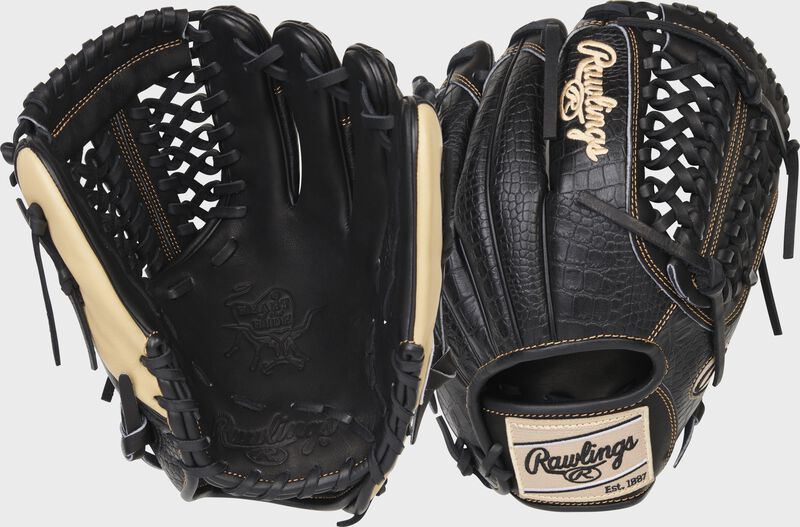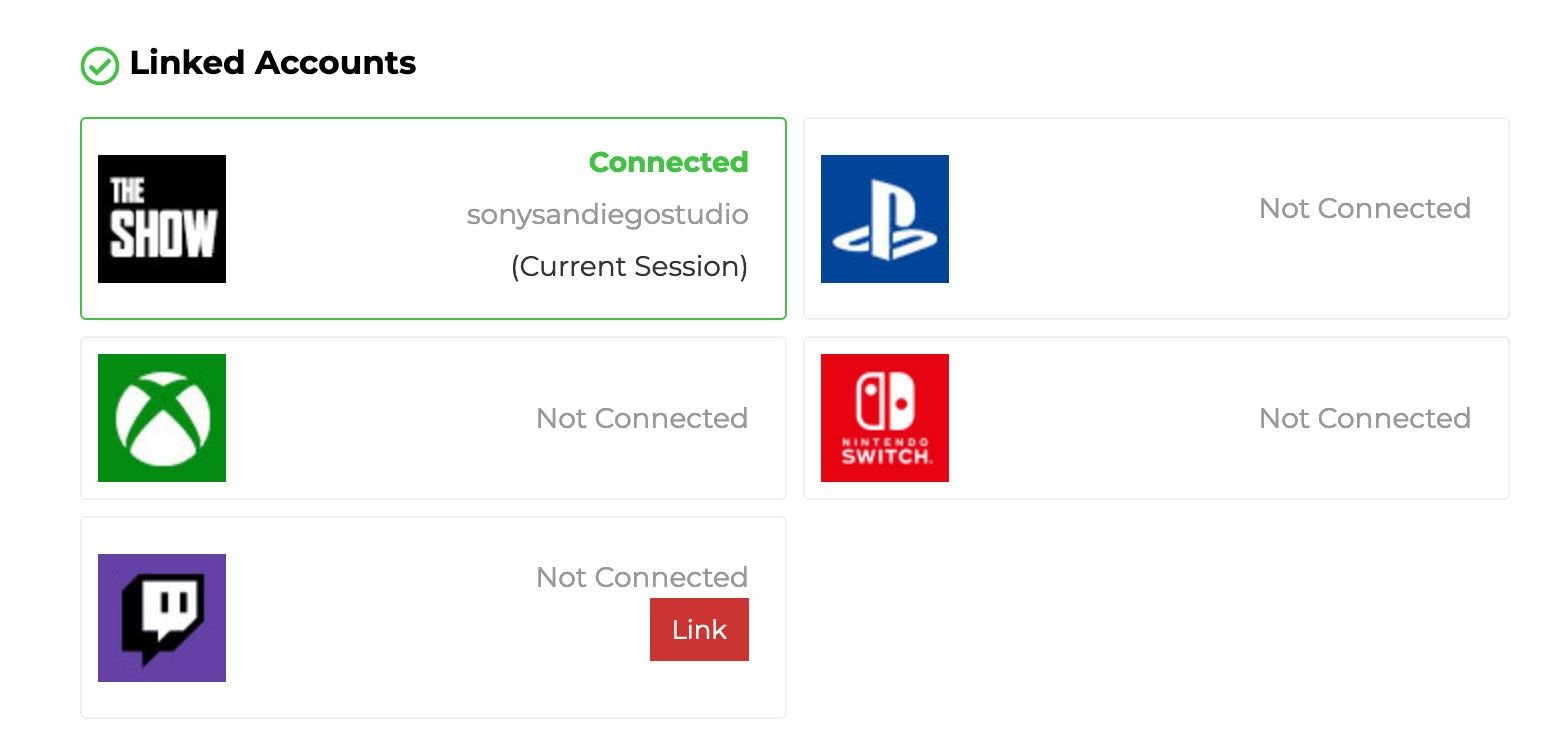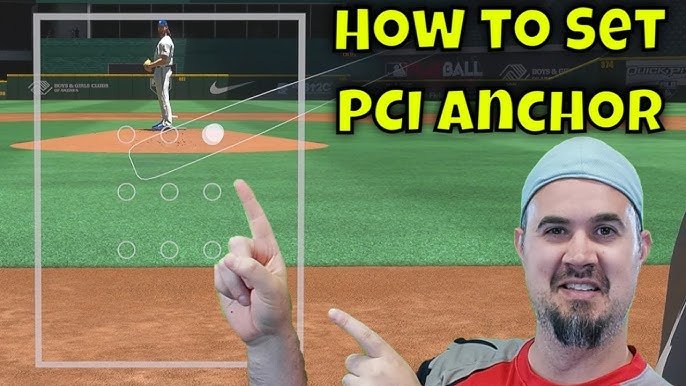Hiding your pitch in MLB The Show 23 can give you a competitive edge. To do this, you need to use a few strategies that make it harder for your opponent to predict your moves.
MLB The Show 23 brings a realistic baseball experience to your screen. Understanding how to hide your pitch can be a game-changer. This skill can make your pitching more effective and keep your opponent guessing. Whether you are new to the game or looking to improve, learning these techniques can enhance your gameplay.
This guide will provide you with simple steps to hide your pitch, making you a more formidable player. Get ready to step up your game and keep your opponents off balance.

Credit: www.justballgloves.com
Introduction To Stealth Pitching
Stealth pitching is a critical skill in MLB The Show 23. It involves hiding your pitch to confuse the batter. This technique can give you an edge in the game. Understanding and mastering stealth pitching will make you a better player.
Importance Of Stealth In Mlb The Show 23
In MLB The Show 23, stealth is vital. Batters can easily predict and hit visible pitches. By hiding your pitch, you can keep the batter guessing. This increases your chances of striking them out.
Here are some benefits of stealth pitching:
- Increases unpredictability: Makes it harder for batters to predict your pitch.
- Improves strikeout rates: More stealth means more strikeouts.
- Enhances game strategy: Adds depth to your pitching strategy.
Overview Of Pitch Hiding Techniques
There are several techniques to hide your pitch in MLB The Show 23. Let’s look at some effective methods:
| Technique | Description | Benefit |
|---|---|---|
| Quick Pitch | Deliver the pitch quickly to reduce reaction time. | Increases element of surprise. |
| Mix Pitches | Use a variety of pitches. | Keeps batters guessing. |
| Change Speeds | Alter the speed of your pitches. | Disrupts timing of the batter. |
Each of these techniques adds a layer of complexity to your game. Combining them effectively can make you a formidable pitcher.
Choosing The Right Pitcher
Selecting the best pitcher in MLB The Show 23 can make a big difference. Hide your pitch strategy to outsmart opponents. Practice using different pitch types and locations to stay unpredictable.
Choosing the right pitcher is crucial in MLB The Show 23. A good pitcher can make it hard for your opponent to hit the ball. This makes it easier for you to win the game. Knowing which pitcher to choose can be tricky. But with a few tips, you can find the best one for your team.
Attributes To Look For
First, check the pitcher’s control. A pitcher with good control can place the ball where you want it. This makes it harder for the batter to hit. Next, look at the pitcher’s stamina. A pitcher with high stamina can throw many pitches without getting tired. This helps keep your bullpen fresh. Also, consider the pitcher’s pitch mix. A good mix of fastballs, curveballs, and sliders can confuse the batter.
Top Pitchers For Stealth
Jacob deGrom is a top choice. He has excellent control and a great pitch mix. Gerrit Cole is another good option. He has high stamina and can throw many different pitches. Clayton Kershaw also stands out. His curveball is hard to hit and he has great control. These pitchers can make it hard for your opponent to guess the next pitch. Choosing the right pitcher can give you an edge. Look for control, stamina, and a good pitch mix. Try out Jacob deGrom, Gerrit Cole, or Clayton Kershaw. They can help you keep your opponent guessing and improve your chances of winning.
Mastering Pitch Types
In MLB The Show 23, understanding different pitch types can improve your gameplay. Mastering each pitch type helps you deceive batters and win games. Let’s dive into the three main pitch categories: Breaking Pitches, Fastballs, and Changeups.
Breaking Pitches
Breaking pitches are designed to move sharply. They can be difficult for batters to hit. Here are some common breaking pitches:
- Curveball: Drops downward, making batters swing over it.
- Slider: Moves sideways, away from the batter.
- Knuckleball: Moves unpredictably, making it hard to hit.
Use these pitches to keep batters guessing. Mix them with other pitch types for best results.
Fastballs
Fastballs are the backbone of any pitcher’s arsenal. They are thrown with high velocity. Here are the main types:
- Four-Seam Fastball: The fastest pitch, with little movement.
- Two-Seam Fastball: Slight movement, making it harder to hit.
- Cutter: Similar to a fastball but breaks late.
Fastballs are great for challenging hitters. Use them to set up breaking pitches and changeups.
Changeups
Changeups are off-speed pitches. They are thrown with the same arm action as a fastball but at a slower speed. The main types include:
- Circle Changeup: Slows down significantly, fooling batters.
- Palmball: Thrown with less velocity, causing batters to swing early.
Changeups are effective in disrupting a batter’s timing. Alternate them with fastballs for maximum impact.
| Pitch Type | Speed | Movement | Best Usage |
|---|---|---|---|
| Four-Seam Fastball | High | Minimal | First Pitch, Strike |
| Curveball | Medium | Downward | Strikeout |
| Circle Changeup | Low | Minimal | Disrupt Timing |
Mastering these pitch types can enhance your pitching strategy. Practice and mix them to keep batters off balance.

Credit: www.rawlings.com
Effective Pitch Sequences
Effective Pitch Sequences are crucial in MLB the Show 23 for fooling batters and securing outs. Mastering these can make you a formidable pitcher. Let’s explore how to set up batters and change pitch speeds to keep them guessing.
Setting Up The Batter
Setting up the batter involves understanding their weaknesses. Pay attention to their tendencies. Do they struggle with high fastballs or low sliders? Use this to your advantage.
Begin with a pitch they expect. A fastball down the middle can set the stage. Follow this with an off-speed pitch. This contrast makes them adjust their timing.
A common sequence is fastball, curveball, and then changeup. Mix it up. Always keep them guessing. The key is to vary your pitches. Never let them get comfortable.
Changing Pitch Speeds
Changing pitch speeds is vital. It disrupts the batter’s timing. Start with a fast pitch, like a fastball. Then, throw a slower pitch, like a changeup.
The speed difference makes it hard for the batter. They won’t know what to expect. Try a sequence like this:
- First pitch: Fastball (95 mph)
- Second pitch: Curveball (75 mph)
- Third pitch: Slider (85 mph)
- Fourth pitch: Fastball (95 mph)
This variety keeps the batter on their toes. They have to constantly adjust. This makes it harder for them to make solid contact.
| Pitch Type | Speed (mph) | Use Case |
|---|---|---|
| Fastball | 95 | Opening pitch, after off-speed pitches |
| Curveball | 75 | Second pitch, after a fastball |
| Slider | 85 | Follow-up pitch, use after curveball |
| Changeup | 80 | Disrupt timing, use after fastball |
Effective pitch sequences are an art. They involve setting up the batter and changing speeds. Practice these techniques to improve your pitching in MLB the Show 23.
Utilizing Pitcher’s Stance
In MLB The Show 23, mastering the art of hiding your pitch can give you a significant edge over your opponents. One effective method to achieve this is by utilizing the pitcher’s stance. Understanding and strategically selecting the right stance can make it difficult for your opponent to predict your pitch, adding an extra layer of challenge for them.
Stance Selection Tips
Choosing the right pitcher’s stance is crucial. Here are some tips to help you:
- Analyze the pitcher’s default stance: Know the starting position and how it affects the pitch’s visibility.
- Experiment with different stances: Try various stances to see which one best hides your pitch motion.
- Consider the batter’s perspective: Choose a stance that makes it hard for the batter to read your pitch.
- Stay consistent: Avoid changing your stance too often to keep your strategy effective.
Advantages Of Certain Stances
Some stances provide unique benefits. Here are a few advantages:
| Stance | Advantage |
|---|---|
| Sidearm | Harder for batters to judge pitch direction |
| Overhand | Creates a deceptive downward angle |
| Three-quarters | Balances deception and control |
Each stance has its own set of advantages. For example, a sidearm stance makes it harder for batters to judge the pitch direction. An overhand stance creates a deceptive downward angle. A three-quarters stance balances deception and control, making it a versatile choice.
Choose the stance that best fits your pitching style and strategy. Experiment and find what works best for you. Remember, the goal is to make your pitch as unpredictable as possible, keeping your opponent guessing and off balance.
Reading The Batter’s Tendencies
Understanding your opponent’s tendencies in MLB The Show 23 is crucial. To hide your pitch effectively, you must first read the batter’s habits. This insight helps you strategize better and keep the batter guessing.
Analyzing Swing Patterns
Swing patterns reveal a lot about a batter. Watch how they swing at different pitches. Do they chase high fastballs? Do they miss low sliders? Note their timing and contact points.
Use this information to plan your pitches. For example:
- If the batter swings early on fastballs, mix in off-speed pitches.
- If they miss low pitches, throw breaking balls low in the zone.
This strategy keeps the batter off-balance and guessing.
Adjusting To Batter’s Strengths
Identify the batter’s strengths and adjust your pitching. If a batter hits inside pitches well, avoid throwing inside. If they struggle with outside pitches, exploit that weakness.
Consider these adjustments:
- Use more outside pitches if the batter excels at hitting inside.
- Throw high fastballs if the batter struggles with high pitches.
- Mix in curveballs if the batter is good at hitting fastballs.
Adapting to the batter’s strengths and weaknesses ensures you stay ahead. The batter will find it harder to predict your next move.
In-game Adjustments
Making in-game adjustments is crucial in MLB The Show 23. These changes can help you gain an edge over your opponent. By adapting to their strategy and maintaining pitch variation, you can keep them guessing. Let’s dive into these key adjustments.
Adapting To Opponent’s Strategy
Pay attention to your opponent’s tendencies. Do they swing early or wait for the perfect pitch? Adjust your pitching strategy accordingly. If they swing early, mix in more off-speed pitches. If they are patient, try to throw more strikes.
Watch for patterns in their hitting. Do they struggle with certain pitch types? Exploit this weakness. Change the pitch location and speed to keep them off balance. Staying unpredictable is key.
Maintaining Pitch Variation
Use a variety of pitches to confuse your opponent. Throw fastballs, curveballs, sliders, and changeups. Mixing pitches keeps your opponent guessing. Avoid throwing the same pitch twice in a row.
Change your pitch location often. Pitch high, low, inside, and outside. This makes it harder for your opponent to predict your next move. Consistent pitch variation helps you stay in control of the game.
Advanced Stealth Techniques
Mastering stealth techniques in MLB The Show 23 can give you a real edge. Knowing how to hide your pitch makes it hard for your opponent to predict your moves. This section covers advanced stealth techniques that will enhance your gameplay.
Deceptive Pitching Strategies
Deceptive pitching strategies are essential for keeping hitters off balance. Vary your pitch speed and location. Use fastballs, curveballs, and changeups in quick succession. A sudden change in pitch type confuses the batter. They won’t know what to expect next.
Mix your pitch types smartly. Throw inside and outside the strike zone. This strategy forces the batter to guess. It increases the chances of a strikeout. Keep your pitches unpredictable. Batters will struggle to time their swings.
Using Mind Games
Using mind games can be a powerful tool in your pitching arsenal. Study your opponent’s tendencies. Notice their weaknesses. Do they struggle with high fastballs? Exploit that. Throw a few low pitches first. Then surprise them with a high fastball.
Change your pitching routine. Vary the time between pitches. Make the batter wait. This can disrupt their rhythm. They might become impatient. Use this to your advantage. A flustered batter makes mistakes. Take your time, and control the pace of the game.
Practice And Improvement
Improving your pitch hiding skills in MLB The Show 23 requires dedication and practice. Building these skills can make a huge difference in your gameplay. Focused practice helps refine your technique and boosts your confidence on the mound.
Drills For Hiding Pitches
Regularly practice specific drills to hide your pitches better. Start with the basic grip and release techniques. Consistent practice helps in maintaining the same arm speed and motion. Practice with a friend or use the game’s practice mode to simulate real-game scenarios. Focus on smooth, fluid movements.
Tracking Progress And Adjustments
Keep track of your progress to know what works and what needs improvement. Record your practice sessions to analyze your technique. Look for any signs that give away your pitch type. Adjust your grip and delivery based on your analysis. Make small adjustments and practice them until they feel natural. Consistent tracking and tweaking lead to better pitch hiding skills.
Conclusion And Expert Tips
Get better at hiding your pitches in MLB The Show 23. Practice different strategies to keep your opponent guessing. Learn to mix up pitches and use the pitching meter effectively.
Mastering how to hide pitch in MLB The Show 23 can significantly improve your gameplay. In this section, we will recap the key points and provide expert tips to help you achieve mastery.
Recap Of Key Points
Firstly, always use the correct pitching interface. Each mode offers different levels of control. Secondly, focus on timing and placement. Precision is vital in confusing the batter. Thirdly, mix up your pitches. Variety keeps opponents guessing and reduces their chance to predict your next move.
Pro Tips For Mastery
Utilize practice mode regularly. It helps refine your skills without the pressure of a real game. Observe professional players. Watching their techniques can provide valuable insights. Pay attention to their pitch sequences and timing. Also, customize your pitching settings. Adjust them to suit your play style. This can enhance your control and accuracy. Finally, stay calm and focused. Patience is key to mastering the art of pitching. By following these tips, you can become more effective at hiding your pitches in MLB The Show 23. Practice consistently and refine your techniques for the best results. “`
Frequently Asked Questions
How To Hide Pitch In Mlb The Show 23?
To hide the pitch in MLB The Show 23, go to settings. Then, select the gameplay options. Find the “Pitching Interface” option and set it to “Classic. “
Can You Turn Off Pitch Feedback In Mlb The Show 23?
Yes, you can turn off pitch feedback. Go to settings, select “Gameplay Options,” and disable “Pitch Feedback. “
How To Change Pitching Interface In Mlb The Show 23?
To change the pitching interface, go to settings. Select “Gameplay Options” and choose your preferred pitching interface.
Is There A Way To Hide The Pitch Type?
Yes, you can hide the pitch type. Go to settings, navigate to “Display Options,” and disable “Pitch Type. “
Conclusion
Mastering pitch hiding in MLB The Show 23 enhances your gameplay. Use the tips shared to stay unpredictable. Practice regularly to improve. Small adjustments can make a big difference. Stay patient and keep refining your skills. Soon, you’ll see noticeable improvements.






